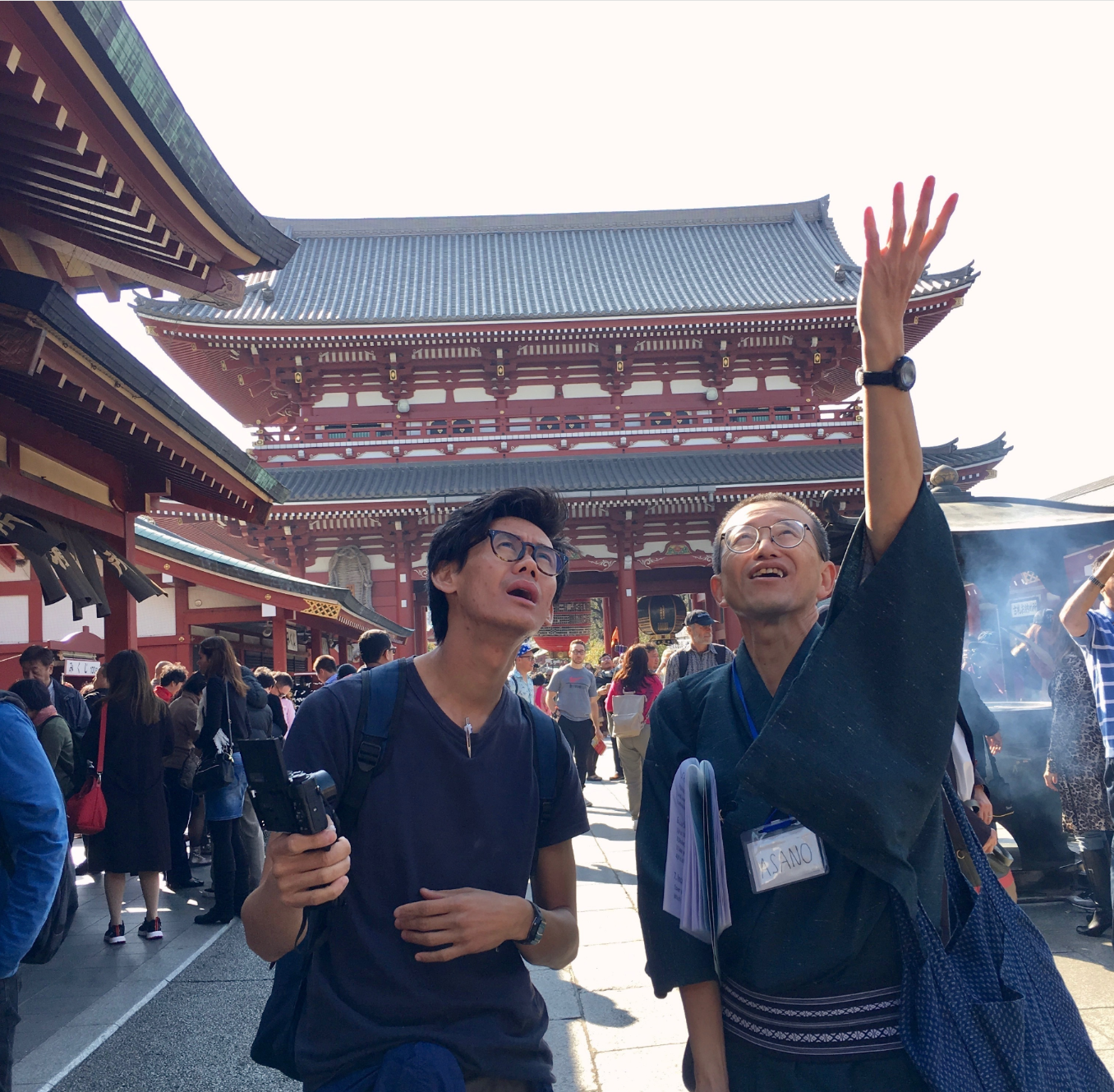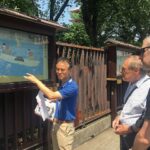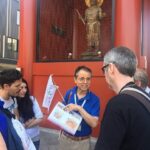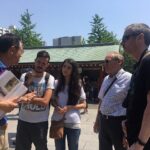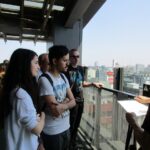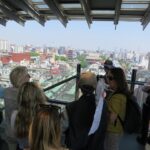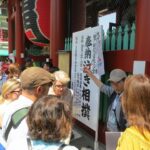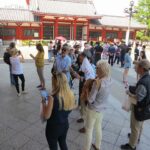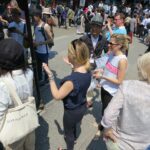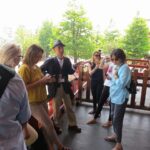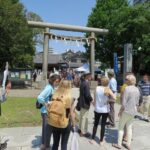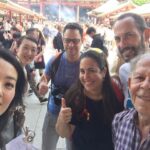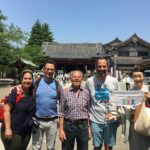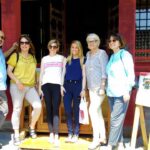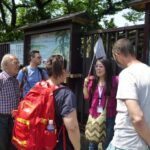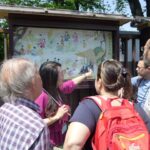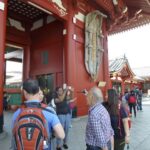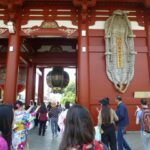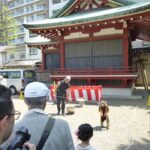Thank you for joining our Tokyo Free Walking.
On that day, April 22, we were honored to welcome 19 guests to our walking tour.
These people came from different regions of the world, including U.S.A., U.K., Israel, Canada, Italy, Malaysia, and Germany.




Apparently, we experienced a windfall condition which was higher temperature than that of seasonal ones.
As we started our tour, the temperature seemed to increase more than 25 degrees and it completely allowed us to wear sweatshirts.
Normally, the daytime temperature rises around 20 degrees, though, at night or early morning, we occasionally have less than 15 degrees.
This is a typical atmosphere of springtime in Japan because this unstable weather condition lasts in the late spring.
Under this seasonal atmosphere, we were pleased to meet a lot of Asakusa lovers.
Kaminarimon Gate, or Thunder Gate warmly welcomed us while we’re strolling in this iconic spot for around 90 minutes.
Most of our visitors are a little familiar with the Sensoji Buddhist Temple and some temple rituals due to the information provided by websites like Trip Advisor, Facebook and other social media sites.
However, before we step foot into the sacred Buddhist building of the Sensoji Temple, let’s take a look around. At the left side of the building, we can see a stone-like monument or concrete marker, called the Maigo Ishi.
Amazingly, legend and history say that this spot once served as a place for social interactions among local Asakusa people in the Edo era(from 1603 to 1861).
Let’s see for ourselves and share this hidden location as well, like how the people in the old days in Asakusa interacted with one another through this small spot. This is one of the few inconspicuous places in Asakusa, and similar to that we have introduced before in this Asakusa blog, alongside the Kumeno-Heinando.

Maigo-Ishi literally means the stone for missing people in English, stands nearby the main hall of Sensoji Buddhist Temple in Asakusa.
It’s 1.8 meters high and a rectangular shaped stone, which was used like some kind of a bulletin board.
Commonly, people wrote down the name and the personal information of their loved ones on a piece of paper and stuck them on the left side of the face in hope that someone could luckily find their missing persons.
Likewise, some people wrote down relevant information and stuck it on the right side in response to inquiries.
It was not uncommon that children get lost in case of emergency like accidental fire or sudden earthquakes because it frequently happened in the Edo period.
Additionally, citizens believed that some of the lost people would get spirited away.
Therefore, this majestic stone fulfilled its responsibility to help the desperate people, who unfortunately lost their hopes, reunite with their loved ones.
Aside from this unique landmark, there are two other sites in Tokyo where the same type of stones convey roles alike.
These historical assets still retain the atmosphere of the Edo period in Tokyo.
(By Arac)

